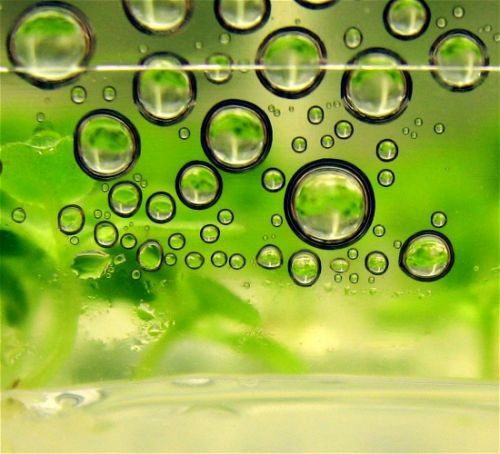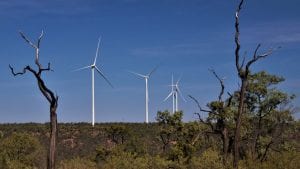After copping an avalanche of criticism over its funding of the now-bankrupt solar manufacturing company Solyndra, it’s nice to see a US DoE-backed technology getting some positive media attention. Actually, this week’s news that a breakthrough from California-based Envia Systems will yield rechargeable lithium-ion batteries that are less than half the cost of current cells, but with roughly double the energy density, is kinda big. “Moon-launch big,” according to Grist’s Christopher Mims. Why? Well, mainly because it could be the breakthrough that will make electric cars “as popular as iPads.”
Using a $4 million federal grant from the Department of Energy’s Advanced Research Projects Agency — Energy (ARPA-E), the scientists at Envia Systems have managed to increase the battery’s energy density by including manganese in the materials of its cathode, the positive electrode to which the lithium ions are transferred, says Yale e360. And by blending carbon with silicon in the anode (the electrode from which the ions flow to create an electric current), they were able to bypass the tendency of silicon anodes to fail after a few cycles.
The company says this innovation, which would see its packs deliver cell energy of 400 watt-hours per kilogram at a cost of $150 per kilowatt-hour, could significantly increase the range of electric cars – to 300 miles, up from the long-held standard of 100 miles – and ultimately cut the price of battery packs (and thus the price of EVs) by 50 per cent; a revelation that has afforded Envia “star status” at ARPA-E’s third annual Energy Innovation Summit this week. The lithium-ion energy start-up was “mentioned by nearly everyone who took the stage on Tuesday,” says GreenTech Media‘s Katherine Tweed.
In announcing the news, Envia Systems co-founder, president & CTO was keen to show automakers that its product had arrived, says Tweed: “Rather than just a proof-of-concept of energy density, I am pleased that our team was successful in actually delivering 400 Wh/kg automotive grade 45 Ah lithium-ion rechargeable cells,” Kumar said. But proving that its battery can perform these miracles is just the first step, says Tweed: “The next step is to integrate some of the components into the batteries that are currently going into EVs,” an achievement Envia Systems’ CEO Atul Kapadia expects will happen in 2014 or 2015. As for a full battery pack with the entire 400W/kg system? Kapadia estimates this will take five to six years.
More from ARPA-E
Envia Systems might have stolen the show at this week’s ARPA-E Summit, but there were many other federally-backed technologies there worthy of attention. After all, as the name suggests, and the website says, ARPA-E focuses on supporting “high risk, high reward,” or “outside-the-box” technologies “that promise genuine transformation in the ways we generate, store and utilise energy” and “whose success would dramatically benefit the nation.” According to Martin La Monica from CNET News (which has a slideshow of some of the more interesting innovations and inventions on display), “a walk through the showcase of ARPA-E grant winners and applicants quickly demonstrates how active research is on ground-breaking ideas.”
One startup, says La Monica, is working on a way to store energy with molten glass, which it hopes to might allow for round-the-clock power delivery from solar power plants. There are also many startups and research organisations turning their attention to applying existing technology or improving energy efficiency, he says – like the army’s solar packs and portable power systems. Others are developing materials for electronics to improve the efficiency of transferring power around the grid. The latest ARPA-E funding program, says La Monica, will be using cheap natural gas for vehicles or chemicals.
Nanoparticles: the new black in solar efficiency
One of the major problems limiting the efficiency of solar cells is reflection. A standard silicon wafer, the base material for solar cells, reflects around 40 per cent of the light from the sun, meaning that 40 per cent of the sunlight is not being converted to electricity. Now, a team of scientists from Dutch lab AMOLF and global firm Philips Research claim to have solved this problem, by developing a new type of anti-reflective coating that reduces the reflection of a silicon wafer from 40 per cent to just 1 per cent.
In a study published in February in the journal Nature Communications, the researchers found that when the solar cell was covered with a pattern of tiny silicon nanoparticles, the silicon wafer became completely black and absorbed 99 per cent of the light, while only 1 per cent bounced back. The key to the breakthrough is in the size of the nanoparticles, says My New Energy Source, which act as tiny cavities that can fit exactly one or more wavelengths of light inside. Once the light is trapped in the nano-cavities, it runs a few laps, and is then transferred into the silicon substrate. And thanks to the carefully selected geometry of the nano-cavities, this principle works for all colours of light from the ultraviolet to the infrared spectrum.
And thanks to a new technique developed at Philips Research, that uses a rubber stamp that rolls the pattern on the silicon wafer, it is now possible to apply this nanoparticle coating in an inexpensive way, says the blog. “This new method makes it possible to fabricate solar cells that are perfectly absorbing,” said Albert Polman, the leader of the team. “The stamping technique can be easily integrated in a roll-to-roll production process. And what I find most interesting is that we had never thought that by scattering light you can control it better. Usually we relate to disorder, but here it actually leads to exceptional control over light.”







